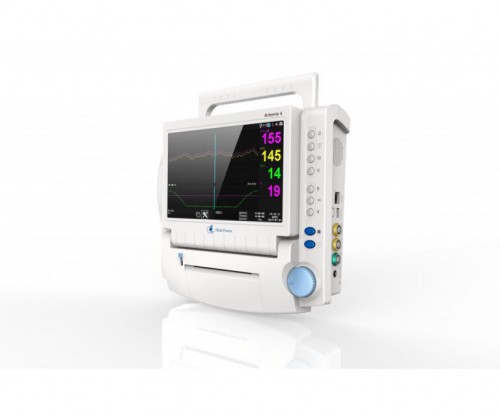Fetal heart rate monitoring is the abbreviation of uterine contraction. It is a graph that applies the electronic fetal heart rate monitor to record the fetal heart rate curve and uterine pressure waveform for clinical analysis, which is the main test to correctly evaluate the fetal intrauterine condition and has no adverse effects on the fetus.

Fetal heart rate monitoring is commonly conducted before and during delivery.
For pregnant women who need fetal heart rate monitoring, it should generally be performed around 36 weeks of gestation. There are two ways of commonly used tests:
Mainly observe the change of fetal heart rate during fetal movement, applicable to:
It mainly measures the gas exchange function of the placenta and observes the change of fetal heart rate during uterine contraction. Applies to:
(This kind of test is contraindicated in the following situations: vaginal bleeding, cervical insufficiency, a history of premature delivery or current symptoms of threatened premature delivery, or those who suspect that the fetus has severe hypoxia in the uterus.)
This way of monitoring helps us to know whether the fetus is acutely hypoxic during delivery. Observation objects: 1)the baseline change of the fetal heart rate when there is no uterine contraction; 2)the baseline change of the fetal heart rate when the uterus is contracted; 3)and the periodic change of the fetal heart rate when the uterus is contracted.
If after a period of continuous observation, there is a late deceleration of the fetal heart rate that cannot return to normal, it usually means that the fetus has severe intrauterine asphyxia and acidosis. At this time, the uterine orifice has not been fully opened, and it is necessary to hurry up to prepare for the caesarean section and active rescue measures for newborns.

Heal Force Fetal Monitor-Artemis 4 Monitor
 • 10.2″ Inch large-screen color TFT display, digital display and waveform oscilloscope of twins heart rate(FHR) and uterine contraction pressure (TOCO)value
• 10.2″ Inch large-screen color TFT display, digital display and waveform oscilloscope of twins heart rate(FHR) and uterine contraction pressure (TOCO)value
• Directly viewing 1: 1 scale of display and print out the waveform
• 7-wafer impulse ultrasound transducer, configured with special HR self-correlation reading algorithm to ensure correct and reliable fetal heart rate(FHR) measurement
• Auto power failure protection and reliable rechargeable Li-ion battery can realize continual monitoring function
 沪公网安备31011802003750号
沪公网安备31011802003750号